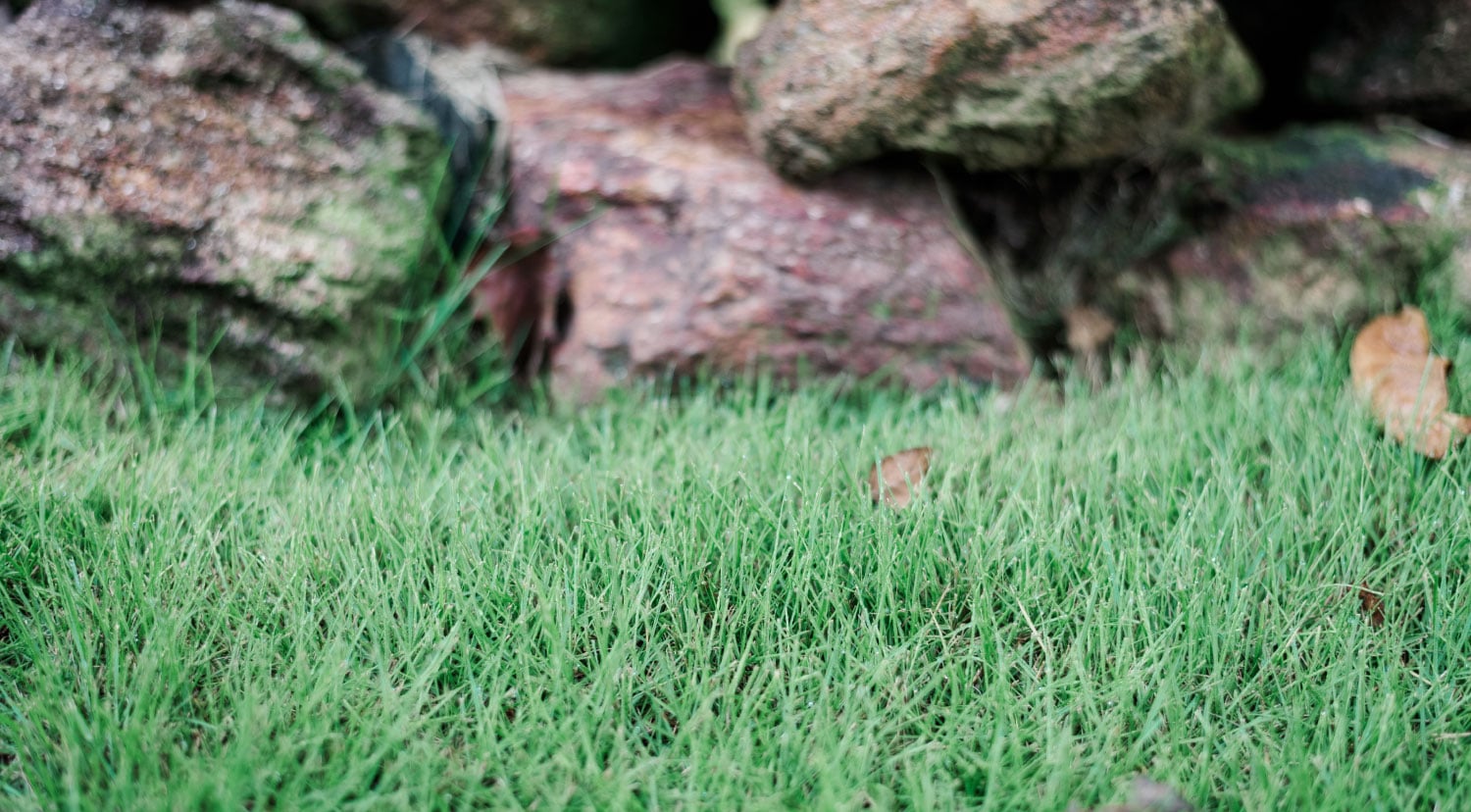If you’re wondering why your beautiful green grass turns brown in the winter, you aren’t alone. Google shows 395 million hits on this question. It also shows 180 million hits for “How do I keep my grass green in the winter?” Desiring a lush green lawn year-round is perfectly reasonable, especially as the fond memories of summer seem to fade with the length of the days and the color of our lawns. Let’s talk about dormancy, why it’s good and healthy for warm-season turfs such as Bermuda and Zoysia, and the opportunities it affords us to care for your lawn.
What Is Dormancy?
In short, dormancy is a stress response for warm-season grasses such as Bermuda and Zoysia. In fall, ever-shortening days and lower temperatures signal these species to slow growth and store energy in their roots.
Warm-season turfs thrive in temperatures between 80 and 95 degrees, making them well-suited for our Atlanta summers. You may notice, however, that these turfs begin to lose vigor as days shorten and temperatures decrease, as discussed in this blog about fall fade. This regression is generally capped by the first few hard frosts, beginning in mid-November. Freezing temperatures and crystalline frost damage the leaves, turning them tan and introducing full dormancy–and brown grass–that generally won’t be broken until warmer temps and longer days return in the spring.
Winter dormancy is actually incredible, and that statement isn’t made lightly. Rather than continuing to push themselves to grow in conditions that aren’t conducive, the grasses passively take advantage of their ability to store energy and wait on better days. Other species find themselves vulnerable to repeated damages, disease, and even demise in high-stress conditions. Warm-season turfs effectively hibernate and wait for spring.
Can I Grow a Cool-Season Lawn?
Atlanta is in the “transition zone.” That means, in some cases where conditions are ideal, cool-season species can be grown. We have a program for those exceptions. Situations that would favor cool-season turfs over warm-season turfs are quite uncommon in our area, however. Generally, a severe lack of sunlight is the only condition that would tip the scales in favor of a grass like Tall Fescue. If you desire to have a dense, vigorous, relatively weed-free turf, results are most readily achieved by selecting a species of Bermuda or Zoysia most appropriate for your yard’s conditions.
Can I Overseed with a Cool-Season Turf in the Winter?
Overseeding is a fairly common practice for specific-use cases. We often see it on sports fields that host late fall or spring sports. If you’re a golfer, you may play a club where they overseed portions of their course and practice facilities. The choice to do this is generally based on aesthetics or use cases not required in home lawns. Winter dormancy in our warm-season lawns enable us at Nature’s Turf to utilize products that encourage optimal health and cleanliness for your lawn. Overseeding your yard compromises that potential.
Should I Embrace Dormancy–and Brown Grass in Winter?
A uniform, clean, dormant lawn can be beautiful. In the south, it’s the hallmark of a well-maintained lawn in the winter. Rest assured that, if well-cared-for during the growing season, a dormant warm-season lawn is just taking a long nap, and green grass will be here before you know it. Our Bermuda and Zoysia programs are specifically designed to utilize the transitional months and dormant months to prepare your lawn for a healthy green-up in the summer, as explained here and here. Give us a call or visit us online to discuss how we can destroy your weeds and defend your lawn. We would love for you to team up with Nature’s Turf.








